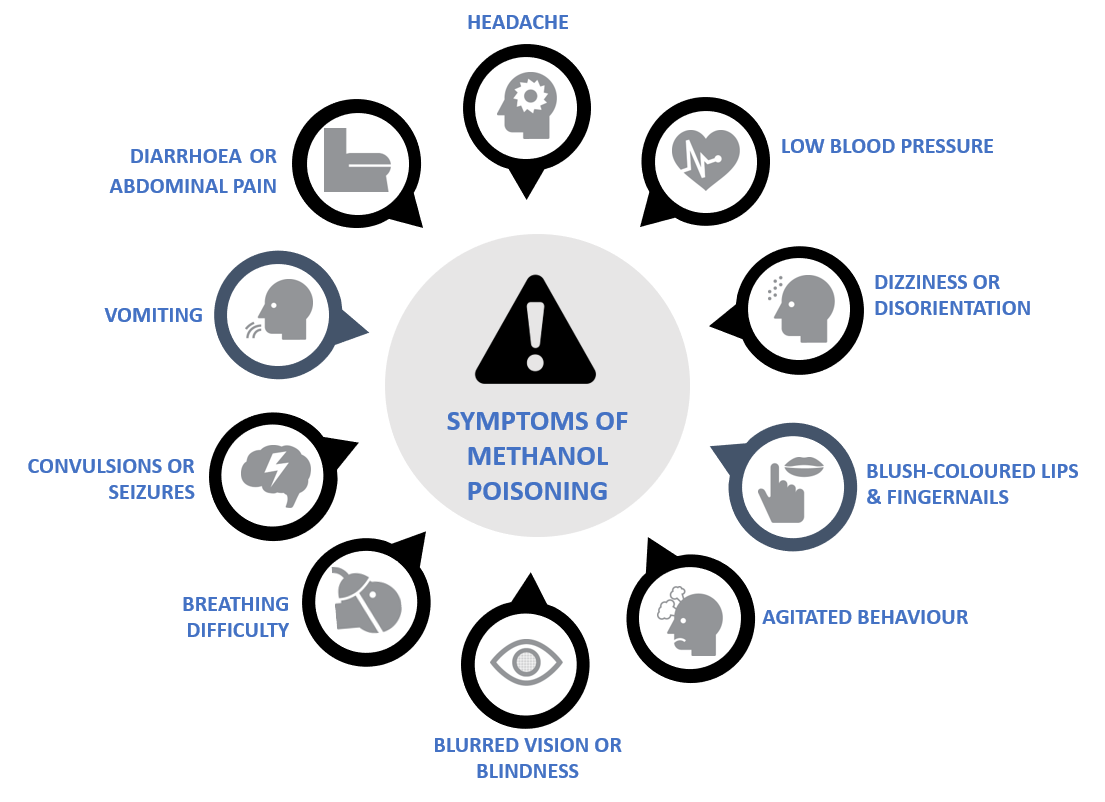Impact of Counterfeits
Methanol Poisoning
Methanol, which is also known as methyl alcohol or wood alcohol, is a form of alcohol that is poisonous if ingested. As little as 30ml could be lethal. It is used as antifreeze, as a solvent, as fuel, and as denaturant (an additive that makes otherwise potable alcohol unfit for human consumption) for example in methylated spirits. All of these have been and are being used by spirits counterfeiters, since they are cheap and easily accessible.
Counterfeiters will attempt to remove any contaminants from whatever liquids ('wet goods') they are using to make their counterfeits, often by adding bleach and crudely filtering through charcoal. This may leave particles suspended in the liquid, which can be an indicator that a product is counterfeit. But, to remove methanol requires the liquid to be heated to the point that it evaporates off (at 64.7 degrees Centigrade), which is a potentially dangerous process as it is a volatile and flammable substance, and which counterfeiters do not always get right, whether through ignorance, carelessness or greed. If the temperature is not high enough methanol will be left behind in the counterfeit spirit, and since it is colourless and smells similar to ethanol (drinking alcohol).
Any methanol that is ingested stays in the body until all the ethanol has been processed. The body then converts the methanol to formaldehyde and then to formic acid. The latter attacks the soft tissue organs in the body, the kidneys, liver, eyes and brain, causing blindness, coma and death.
Symptoms of methanol poisoning include:

AACS partners take the threat of methanol poisoning very seriously and AACS has sought to raise awareness of this risk through its training programmes, including working with the Methanol Institute (www.methanol.org) on joint presentation to law enforcement and health professionals.

